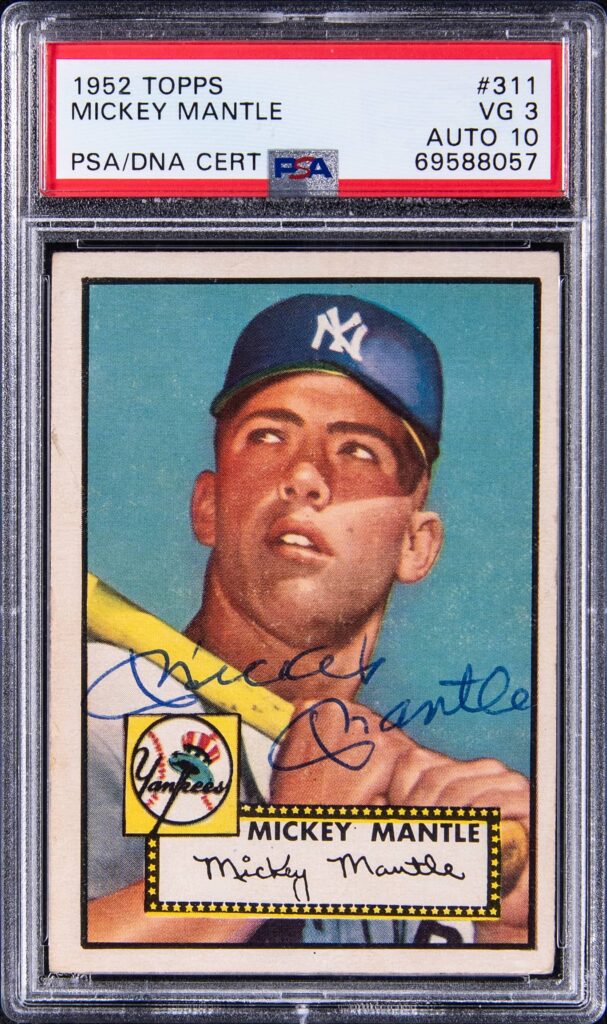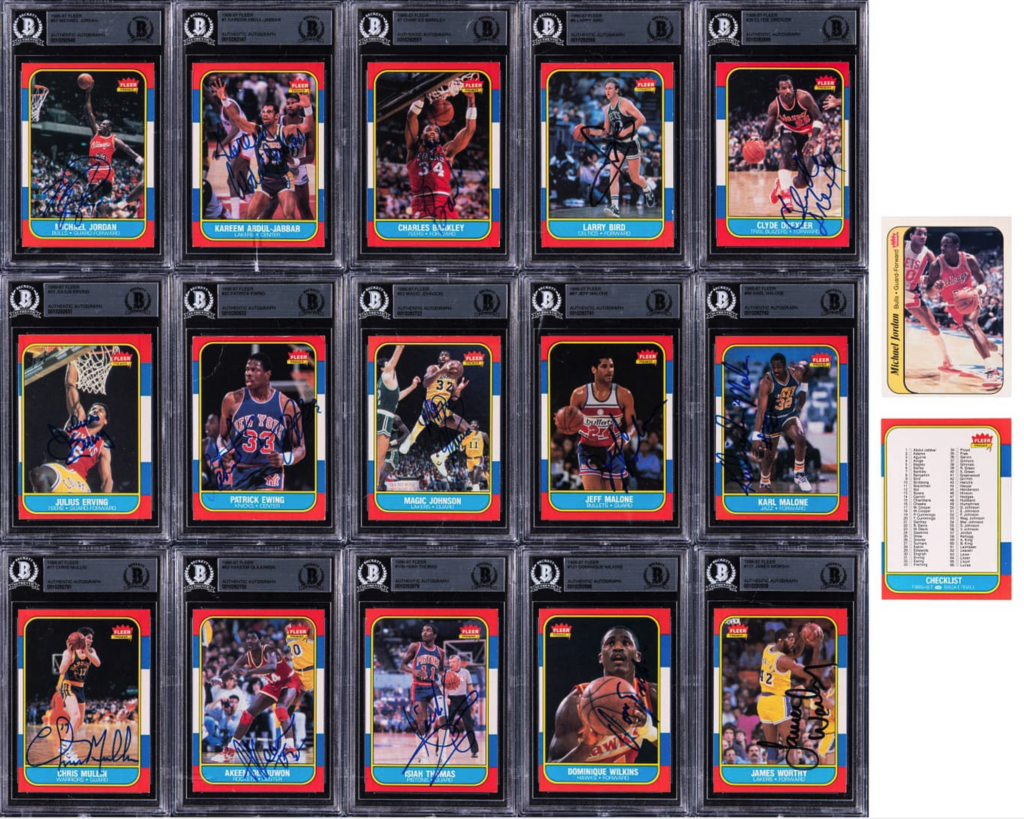#Signed #Vintage #Cards #Gain #Audience #WorthPoint

Image source: Goldin
A Mickey Mantle 1952 Topps card selling for big dollars is not news under most circumstances, but this one’s a different story.
As we reported at the start of December, a signed version of the famed baseball card featuring Mick’s autograph went up for bids. PSA graded the card 3, while the signature garnered a 10 from the leading assessor.
At auction with Goldin, the unique card sold for nearly $800,000 on the block and, more impressively, received 23 bids.
Impressive? Absolutely. Isolated? Not quite. It’s the opposite. The market for personally-signed, high-dollar cards is increasing in size. Collectors who once shied from getting valuable rookie cards or other older, high-dollar cards are now picking up the practice, so much so that athletes are becoming increasingly aware of the market.
All Vintage Cards writer Vinie Rullo identified one of these cases in June 2024. “(Joe) Montana was among the first players to increase the cost of signing his rookie cards. He was asking around $700 to $800 for rookie card signatures, and now he’s asking for as much as $1,000+ through some websites and signings,” Rullo reported.
A Sordid Past
Having a player sign a high-dollar card was once considered a non-starter. The notion, simply put, sent shivers down the spine of a 90s or 2000s collector.
Why? The impression was that the signature was defacing the card. Any ink was forbidden, as Just Collect described in a debate blog. “If you owned a 1952 Topps Mickey Mantle rookie card, would you draw a mustache on the Mick? Probably not; you know that doing so would actually lower the value of the card,” the company argued. “So if Mickey Mantle decided to write his name on the card, technically there is no difference between his name and your mustache.”
However, that attitude began to change amid low times in the hobby.
In 2012, between the controversy and the popularity spike, PSA and its Sports Market Report spoke with collector Mike Navarro about his habit of getting older rookie cards signed. Navarro, who can now be called a pioneer of this widespread practice, justified the unusual task:
I just think signed rookie cards have great crossover appeal between autograph collectors and card collectors. That’s what I am, and they have great appeal to me.
I think having a card signed by the player goes hand-in-hand. It is a card that was actually held by the player—they actually had an interaction with it. The signature represents a second or two of that player’s life. To me, that connects it to that player in a way that makes it much more special than just being a card. I see more and more people becoming interested in signed rookie cards, and I think it’s a genre of the hobby that is still very much in its infancy.
Still Soaked in Controversy
But has the practice been entirely accepted, and is now the new hot trend in the sports card world? Perhaps not. There are more shades of grey when you compare the Mantle to a second Goldin lot, one that is quite possibly even more impressive.
In December 2024, Goldin featured the famed 1985-86 Fleer Basketball set, almost completely signed. Only two cards between the base set and insert stickers, one being the checklist, weren’t autographed. That impressive set includes the rookie cards of Charles Barkley, Hakeem Olajuwon, Karl Malone, and Michael Jordan, among others. All of these cards were signed, with Beckett certification guaranteeing their authenticity.
That lot reached $45,000 with a day to go. Ultimately, it sold for more than $123,000, but the near triple bidding coming in just the last 24-plus hours shows there is hesitation in the marketplace.

Image source: Goldin
What Are They Worth?
The Mantle card certainly hit a mark that experts would forecast it to reach, but the Fleer set is a bit of a different animal.
It can easily be stated that Mantle is a rarity, even if he signed some cards during his career. He was a prolific signer, mainly in the 80s and 90s, which tells you that few of these cards would be signed.
To that point, the finite number of such cards drives its popularity, as it would for any player who passed away amid the “no-sign” era. The same, for example, could be applied to Maurice Richard or Joe DiMaggio.
So there’s no question that these cards carry substantial value, but what about modern players or living legends? The answer here may be in the Fleer set.
As noted above, the Fleer set had a mammoth increase in bids over the waning time of its listing. The Jordan card alone, theoretically, should command more than $100,000 if the urban legend of an Upper Deck agreement forbidding MJ from signing his rookie card any longer is true. Most other big names are not only living but prolific signers, meaning getting a rookie card signed by them is easily attainable.
Suppose you are pondering getting your valued rookie card signed as an investment. In that case, the best advice is first to consider the population count—pursue an athlete later in their years who will likely not be signing much (for one reason or another). If you intend to do the same with a modern player, know you won’t be alone, and getting a good ROI will be more challenging.
Jon Waldman is a Winnipeg-based writer. He has written for Beckett, Go GTS, Canadian Sports Collector, and several other hobby outlets over his two decades in the hobby. His experience also includes two books on sports cards and memorabilia. Connect with Jon on Twitter at @jonwaldman.
WorthPoint—Discover. Value. Preserve.




